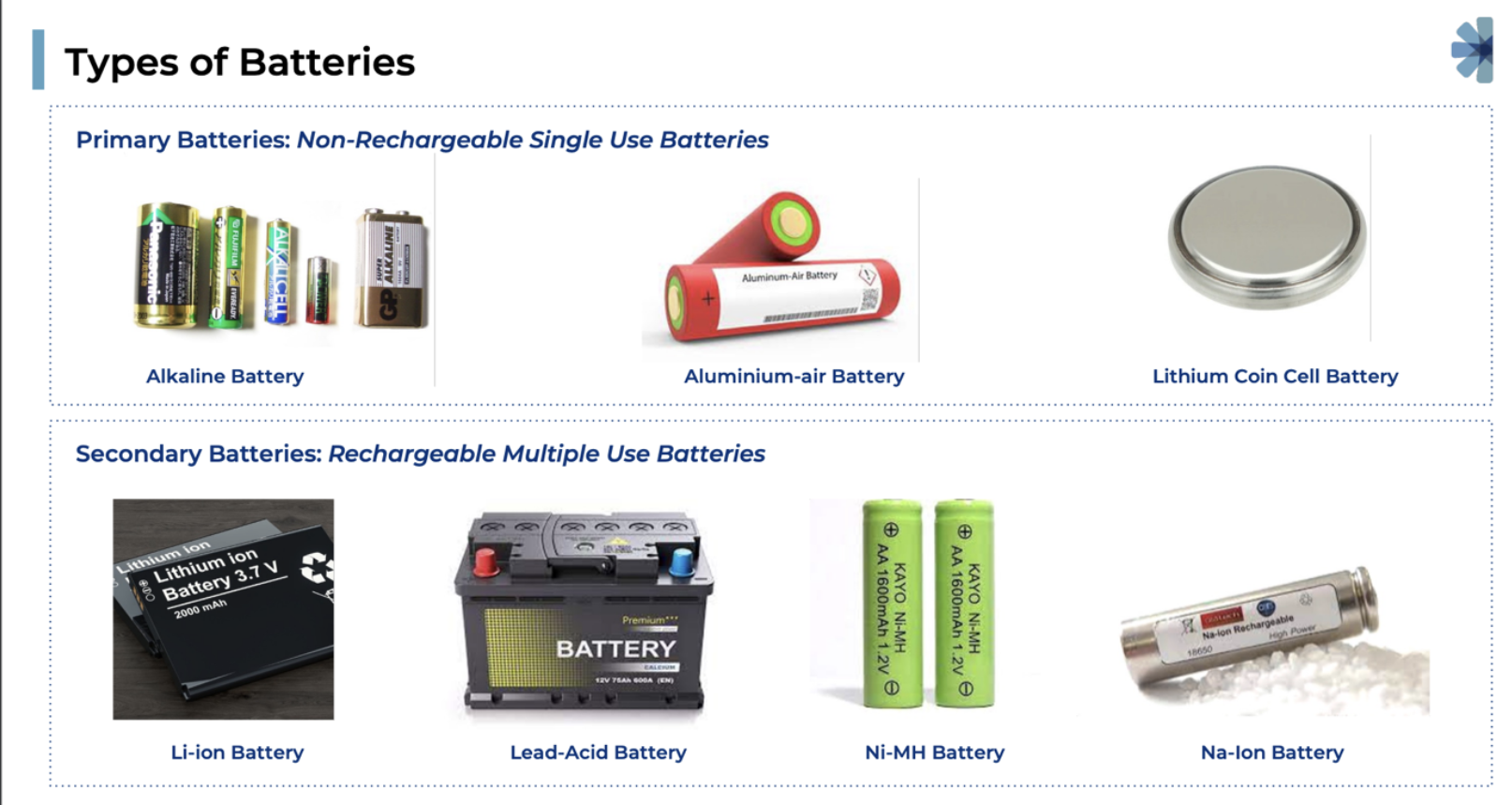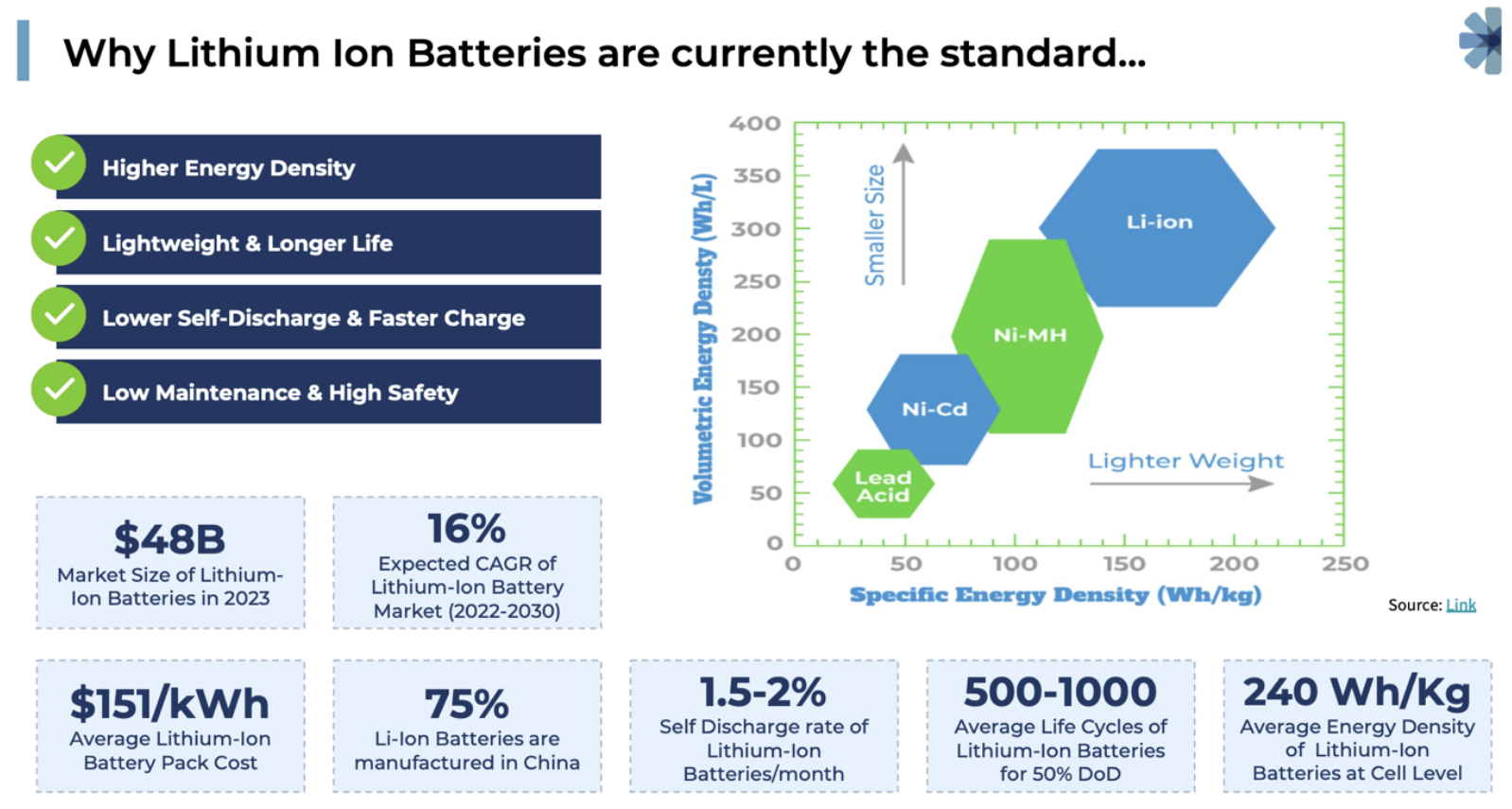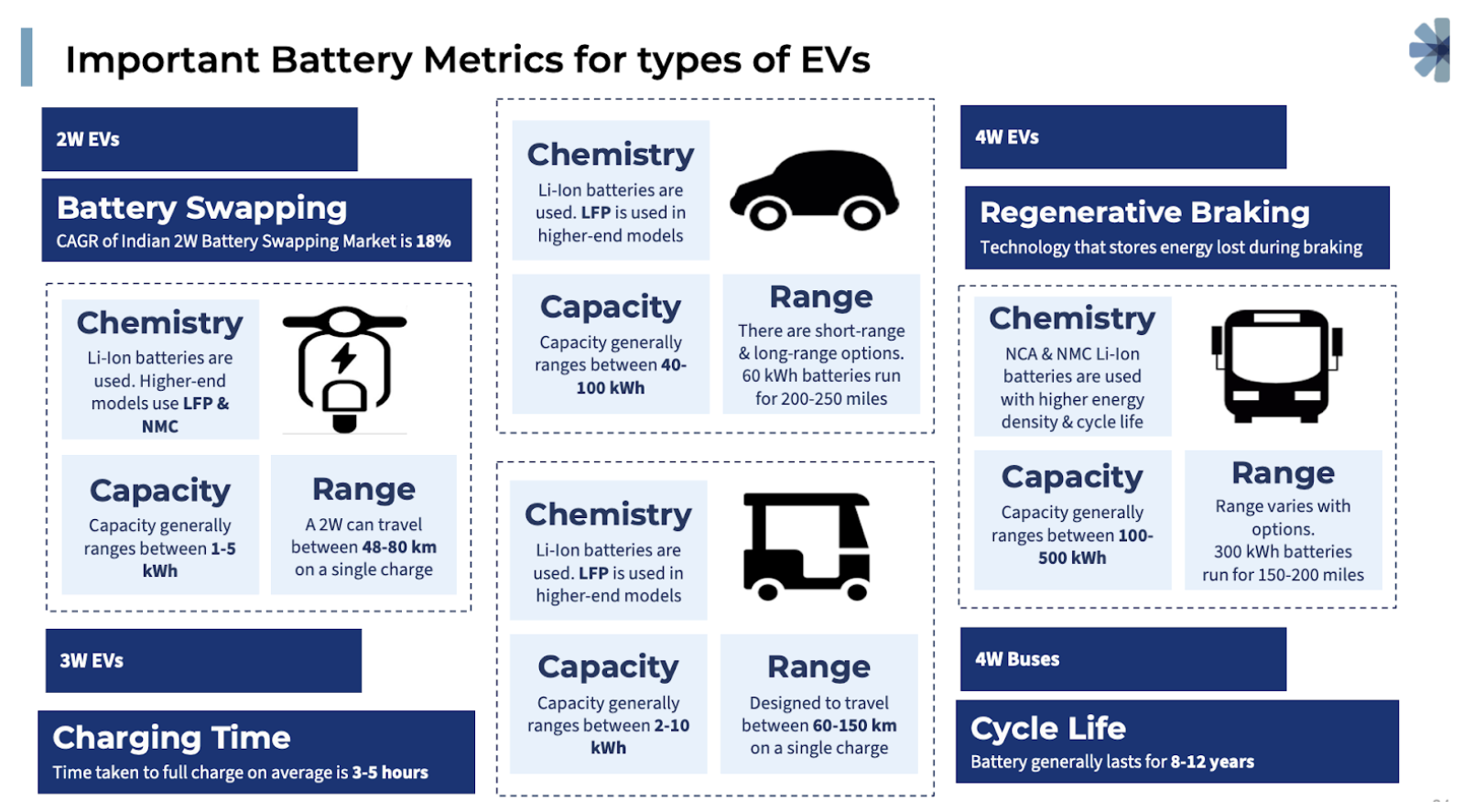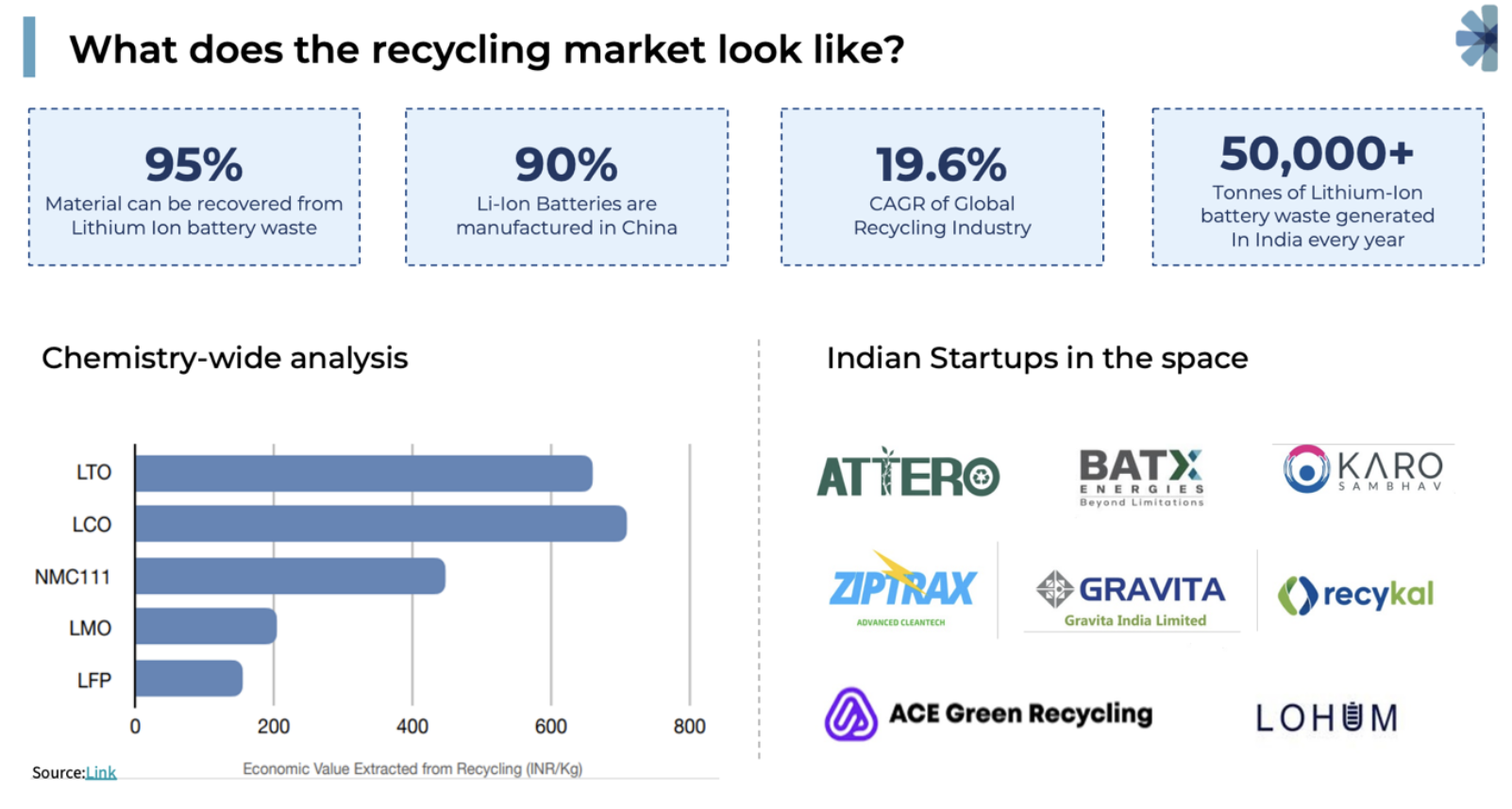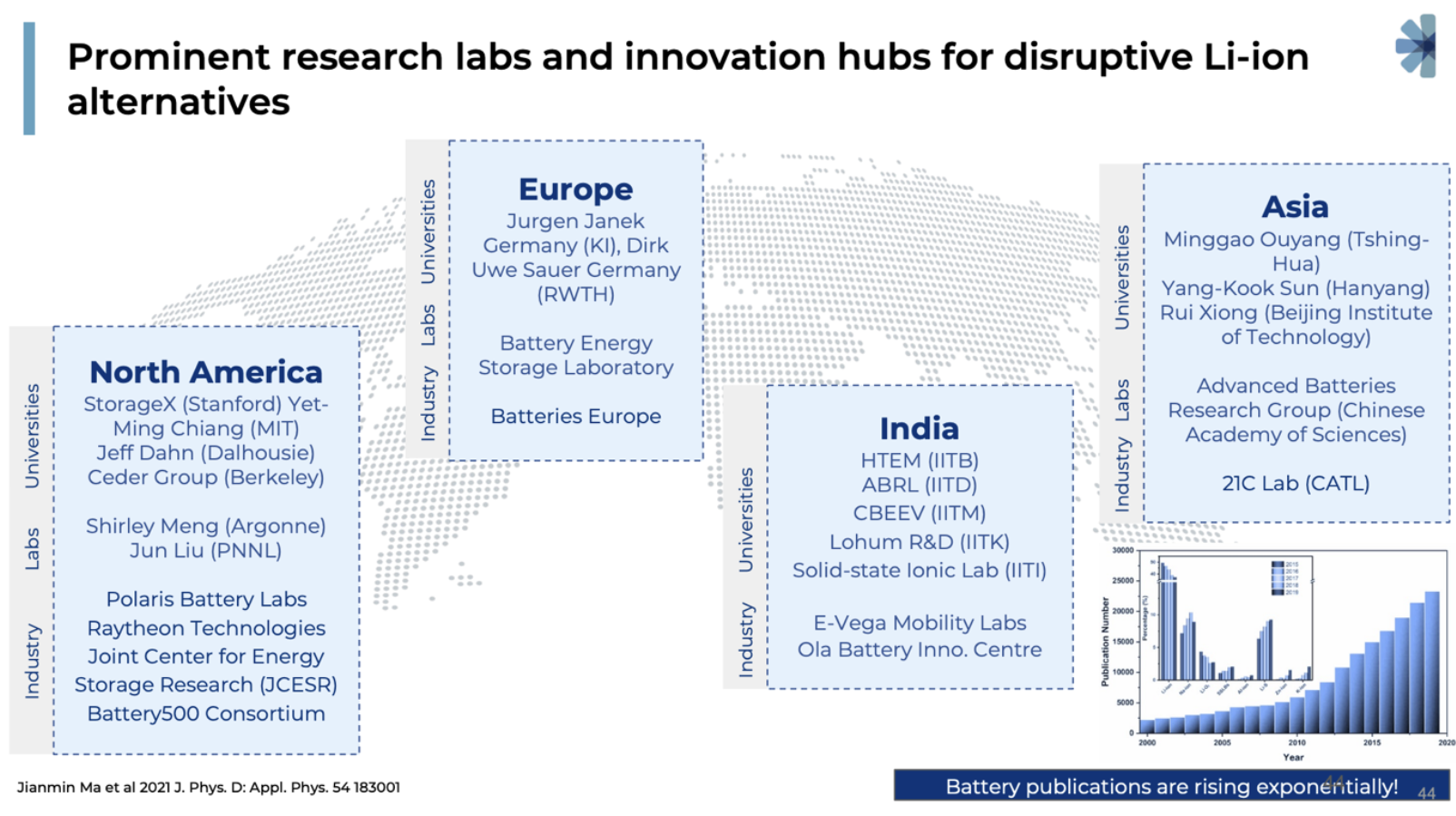As the world takes strides towards a Net Zero future, the role of energy storage in the energy system will expand rapidly. Whether it be electric vehicles, grid-connected battery energy storage systems, or industrial applications, it is increasingly clear that energy storage is critical to achieve a Net Zero future, connecting non-dispatchable renewable energy to users with varying types of energy requirements at various points of time.
Resource
- Battery Bluprint report pdf, 5 MB
As the world takes strides towards a Net Zero future, the role of energy storage in the energy system will expand rapidly. Whether it be electric vehicles, grid-connected battery energy storage systems, or industrial applications, it is increasingly clear that energy storage is critical to achieve a Net Zero future, connecting non-dispatchable renewable energy to users with varying types of energy requirements at various points of time.
Energy storage comes in many forms, from pumped hydro, to molten salt and compressed air, to chemical batteries of many sizes, shapes and applications. Electro-chemical energy storage, most commonly in the form of batteries of some kind, offers the most flexibility for design and customization to specific requirements, because of the vast variety of elements and chemical reactions that can be engineered. These customizations and inventions are covered under the umbrella of battery-tech.
All of us are familiar with batteries, from the time of our first toys or gadgets. The various kinds of batteries we encounter in our daily lives go from lead-acid batteries starting our cars in the morning, to lithium-ion batteries in our phones and laptops, to Zinc-alkaline batteries used in TV remotes or toys. All of these evolved over the years for various applications, but innovations in recent years have been driven by the rapid adoption of electric vehicles.
These batteries vary by the charge they can hold, the current they can offer, and their expected service life.
Battery-tech is seeing rapid innovations, in India and abroad, in industries as well as universities. From evolution in the Lithium-ion batteries to using materials like sodium, zinc, bromine, and others in new technologies, there are new developments being reported almost on a daily basis.
Rapid reduction in lithium costs in the last few decades, despite a more recent uptick, has opened up new avenues for adoption of Li-ion batteries in new applications.
These innovations go from new chemical reactions to new form-factors to new applications, and yet newer applications to known technologies. All of these new factors, technologies and products are quite bewildering, making decision-making onerous.
For investors to be able to make informed decisions, it is important to have a structured framework to assess the viability of various technologies and products in the market, across and within various segments.
This Battery BLUprint is Blume's effort to put some structure to the wide range of new chemistries, in new geometries, applications and form-factors, and develop guidelines that can be widely used match their innovations to the most likely go-to market.
In this study, we examine the various kinds of applications for batteries, the near-horizon innovations, and the trajectory for various types of chemistries. We also identify some prominent labs that are at the leading edge of innovation, around the world
Blume will be developing and publishing more of such BLUprints, to share our insights in the climate-tech space with other stakeholders and partners. We hope you find these pieces useful, so you can join us in the journey towards a shared sustainable future.



